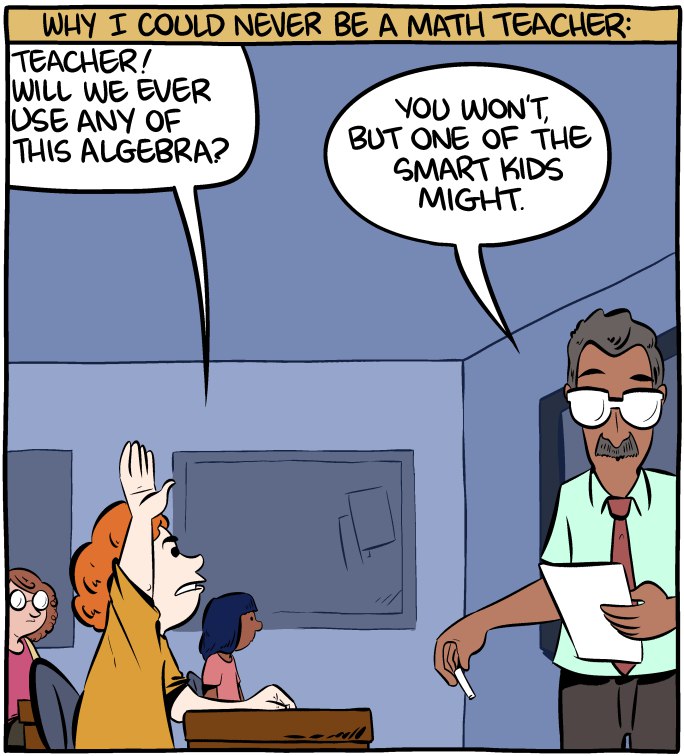Join devRant
Do all the things like
++ or -- rants, post your own rants, comment on others' rants and build your customized dev avatar
Sign Up
Pipeless API

From the creators of devRant, Pipeless lets you power real-time personalized recommendations and activity feeds using a simple API
Learn More
Related Rants

 Math is hard.
Math is hard. When you wanted to know deep learning immediately
When you wanted to know deep learning immediately :)) finally a good answer
:)) finally a good answer
This morning, I tried to abstract myself from my computer while trying to calculate sqrt(1.81).
I came up with what I thought to be a genius method. I tried to find B such as (1+B)^2=1.81. Then I ended up calculating the discriminant of 1+2B+B^2 and had 4*1.81. Sounded funny at first, but upon calculating the positive solution amongst the 2 possible ones, I ended up with (-2+2sqrt(1.81))/2 = ... sqrt(1.81)-1. Upon replacing in the initial equation, one gets (1+sqrt(1.81)-1)^2 = (sqrt(1.81))^2 = 1.81.
I'm sorry for having let you down, dear pasokon. Please forgive me.
undefined
math